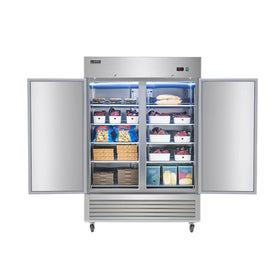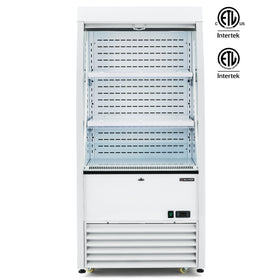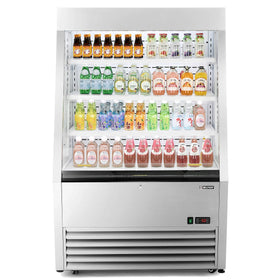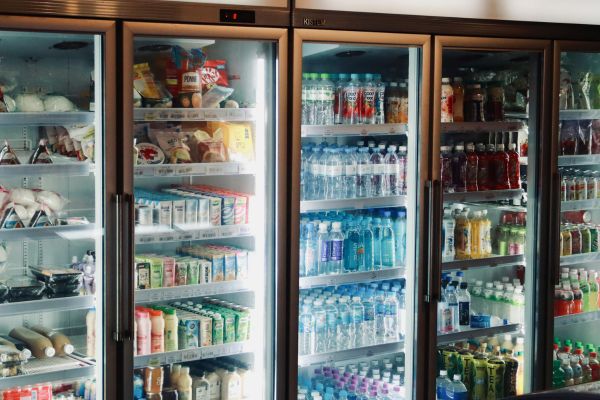One important question you should always ask before buying a refrigerator is: how many watts does it use? Understanding refrigerator wattage will help you choose an energy-efficient model that not only keeps your items fresh and cool but also helps you cut down on energy costs.
So, how many watts should a refrigerator use? Or, how many amps does a refrigerator draw? How can you get a commercial refrigerator?
Let's break down refrigerator power consumption and cover everything from standard-sized fridges to mini fridges should use.
How Many Watts Does a Refrigerator Use?
The average wattage of a refrigerator is about between 300 and 400 watts. In fact, most household refrigerators use between 100 and 800 watts.
However, some refrigerators consume more power than others, so the average refrigerator wattage typically falls between 300 and 400 watts.
The Average Wattage of a Fridge
The average wattage of a fridge varies depending on the type of fridge in question. Commercial refrigerators use an average watt of about 500-1,500 watts, while mini-fridges use only 50-100 watts.
Here’s a general breakdown of refrigerator wattage by type:
- Standard Household Refrigerator: 300–800 watts
- Energy-Efficient Refrigerator: 150–400 watts
- Mini Fridge: 50–100 watts
- Commercial Refrigerator: 500–1,500 watts
To determine the average wattage of a fridge, you can look in the manual or inside the unit for its power rating. The power rating for most fridges is usually labeled inside.
How Many Watts Does a Mini Fridge Use?
On average, a mini fridge uses significantly less power than a full-sized model. Depending on size and efficiency, most mini fridges can use between 50 and 100 watts.
The per day wattage usage of a mini fridge typically uses about 1.2–2.4 kWh. It is an extremely cost-effective option for a dorm room, an office, or a small apartment.
How Many Watts Does a Refrigerator Use Per Hour?
Determining how many watts a fridge uses per hour can be complicated because fridges don’t run at full power throughout the day. Hourly consumption varies depending on the power rating of the fridge and the working pattern of the compressor.
If a fridge is rated at 300 watts, for example, but the compressor runs one-third to half of the time, then the watts per hour would be:
- 100 to 150 watt-hours per hour
- 1.2 to 3.6 kilowatt-hours (kWh) per day
- 36 to 108 kWh per month
Here’s what to remember: a fridge may be labeled a 300-watt appliance, but that doesn’t mean it uses 300 watts constantly. The hourly power consumption can vary depending on its usage cycle.
How Many Amps Does a Refrigerator Use?
Another frequent question people ask about refrigerator consumption is: how many amps does a fridge use?
In the U.S., most household refrigerators run on 120V (220V in other countries). Knowing that Amps are calculated using the formula Amps = Watts / Volts, it is easy to calculate how many amps a refrigerator uses.
Here is how many watts different kinds of refrigerators use at 120-V.
- A standard refrigerator (300–800W) uses approximately 2.5 to 6.7 amps at 120V
- Energy-efficient models (150–400W) use 1.25 to 3.3 amps at 120V
- Mini Fridge (50–100W) uses approximately 0.4 to 0.8 amps at 120V
Setting up a backup power system and knowing your refrigerator’s amperage are crucial.
How Many Amps Does a Refrigerator Use Per Hour?
Refrigerators cycle on and off, so the number of watts per hour a refrigerator uses is often lower than the rated amperage. A fridge that operates at 3 amps when running but cycles on one-third to half of the time would use about 1 to 1.5 amps per hour.
So, to figure out how many amps your refrigerator uses in an hour, you need to know its overall amperage rating and how frequently it cycles every hour.
Calculate How many Watts/Amps Your Refrigerator Uses
Refrigerator Startup Surge and Running Explained
Refrigerators usually have a startup surge: a startup surge is when the compressor starts, and the refrigerator temporarily draws more power.
Startup surges happen because a refrigerator does not work at full capacity all the time: the compressor works in cycles.
The surge can be 2 to 3 times the running amperage, meaning a fridge running at 3 amps can momentarily spike to 6–9 amps when starting.
If you’re using a generator or inverter, it is always advisable to take this peak power demand into consideration and ensure the system can handle the surge.
How to Reduce Refrigerator Power Consumption
Refrigerators are essential, but they do consume a fair amount of electricity. Here are some tips to cut down on energy costs.
- Keep the fridge full: A well-stocked fridge retains cold better.
- Set the right temperature: 37–40°F (3–4°C) for the fridge, 0°F (-18°C) for the freezer.
- Choose an Energy Star-certified fridge: Saves up to 30% on electricity.
- Clean the coils: Dirty condenser coils reduce efficiency.
- Limit door openings: Reduces compressor workload.
By understanding refrigerator wattage and amperage, you can make informed decisions about energy use, efficiency upgrades, and backup power options.
Low Energy Consumption Refrigerators
Built with a high-density insulation layer and low-E tempered glass door, Wiprep Kitchen's display refrigerators offer excellent thermal insulation. They come with smart doors that automatically close at 90° or less to prevent energy waste.
This commercial cooler consumes only 1.7 kWh/24h. It is built to enable you minimize energy consumption in your commercial kitchen.
Wilprep also offers a collection of energy efficient reach-in refrigerators certified for safety and quality by ETL, ETL Sanitation, and DOE. These refrigerators have been tested by Intertek, and meet the applicable requirements of Energy Star and CEC.










